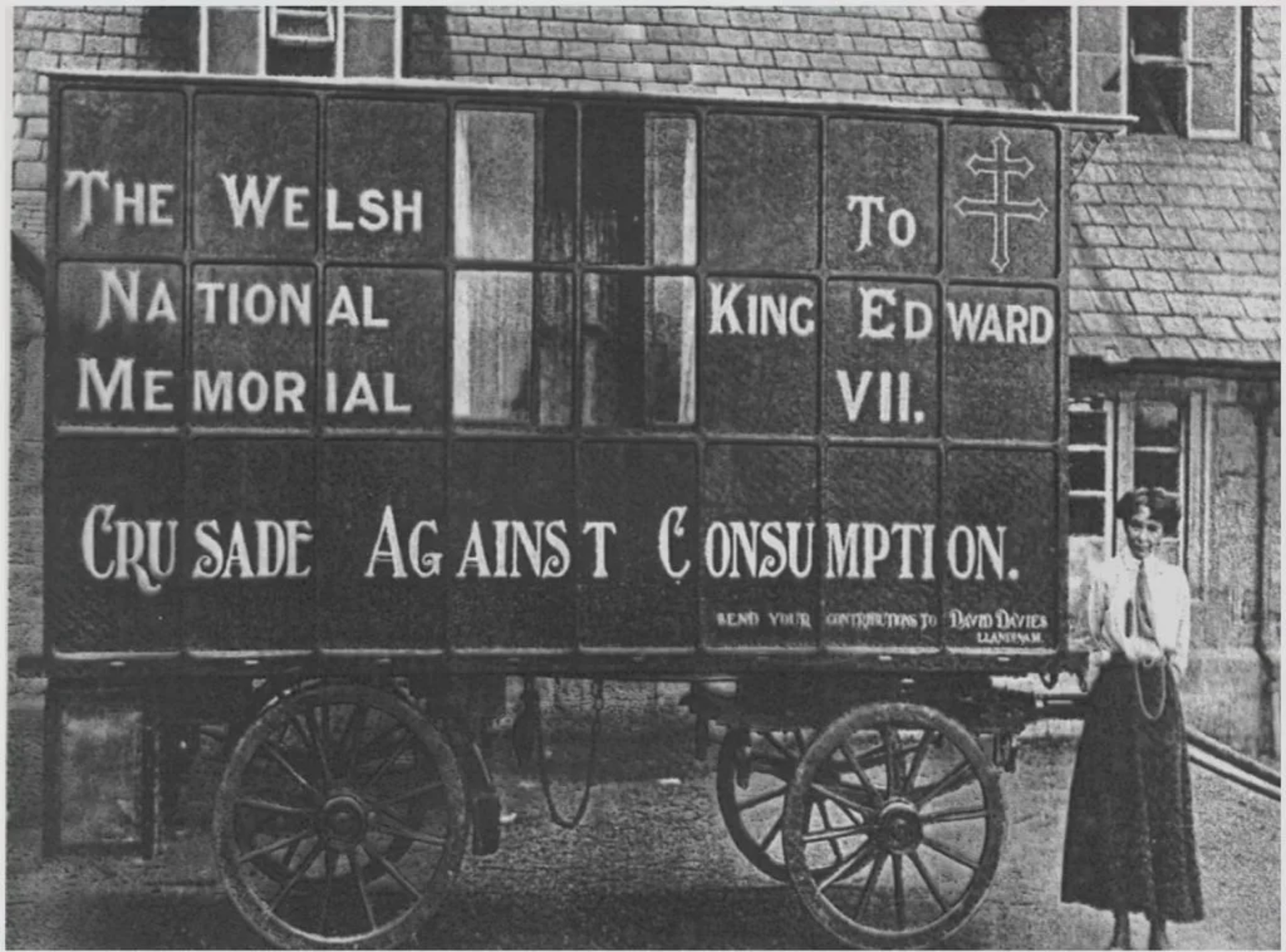Your basket is currently empty!

NHS Wales – Older Than You Think
This is a blog post from our guest writer, Emma Snow. It sheds some light on the history of the National Health Service (NHS) and how there existed a National Health Service pilot in Wales 38 years before the more well-known NHS which came into existence during the post-war Attlee Labour government, in which Nye Bevan played a pivotal role.
Did you know Wales had a national health service 38 years before England?
5th July 2024 will be celebrated across the UK as the 76th birthday of the NHS – yet in Wales we should in fact be celebrating the 114th birthday of our national health service.
The first ever national health service pilot in the UK was set up in 1910, covering tuberculosis (TB) services in Wales. It was set up by a group led by three Welsh men: health commissioner John Tomley (pictured below), leading doctor David Rocyn-Jones, and MP and philanthropist David Davies. They named the organisation the Welsh National Memorial Association (WNMA). Over the years, thousands of staff and tens of thousands of patients passed through its doors.

The Second Pilot
The second national health service pilot was set up during the First World War, when hospitals, which had previously been independent, had to work together to cope with the number of casualties from the war. John Tomley became chair of the North Wales hospitals area, which then covered the top half of Wales. After the war, everyone hoped that a full national health service would be set up in the UK, following the example of the WNMA. However, austerity was introduced by the government instead, so it was not to be.
During the 1920s and 30s, the TB rate in Wales improved, but not as fast as England. This was surprising as the TB health services were much better in Wales because of the WNMA, which England didn’t have. John Tomley started to work with the WNMA doctors and collate TB statistics to find out the root causes. By the late 1930s, John became the UK leader of the friendly societies who provided nearly all healthcare for workers in those days, so equivalent to the chief exec of the NHS today. He led the campaign for the government to hold a full inquiry, supported by his local MP Clem Davies.
Eventually their campaign was successful and the Welsh TB Inquiry began, led by Clem and a senior doctor. With the help of John’s TB statistics map, and interviewing people across Wales, they discovered what are today called the social determinants of health, which have even more effect on people’s health than health services. Wales was particularly hard hit by high unemployment. There was no social housing, so people were forced to pay high rents to private landlords for poor quality housing with bad sanitation. Education was also poor, with schools lacking transport, sanitation, heating and hot food for children. This all added up to higher rates of disease than England.
The Welsh TB Inquiry
The Welsh TB Inquiry caused an outcry across the UK in the national press and uproar in Parliament when the final report was released in 1939. Yet the work had to be put on hold as the Second World War broke out.
By 1941, William Beveridge had been commissioned to write a report on what should happen with post war reconstruction. Although no-one from the Welsh TB Inquiry had been appointed by the government to his official group, he knew Clem well, and therefore spent a year working with him behind the scenes. Clem therefore contributed a lot of the evidence and outcomes from the Welsh TB Inquiry, and this formed the basis of the Beveridge Report’s Five Giants, the social determinants of health, which the NHS and welfare state would be set up to fight against.
The third national health service pilot was set up during the Second World War, when hospitals and other medical services were taken over again and worked together for the war effort.
The NHS is Born

Finally, after this war, the people voted for a national health service and the welfare state in 1945, and Nye Bevan was chosen to make our NHS a reality. After much work, he set up the full NHS in 1948. The WNMA became the transitional authority for Wales, so effectively it turned into NHS Wales. The first NHS Wales headquarters remained at the WNMA headquarters of the Temple of Peace and Health in Cardiff.
Emma’s book on the topic, The First NHS, was published in November of 2023 and is available to purchase.
Guest Writer – Emma Snow
Emma Snow is chief executive of health and social care charity Community Opportunity, works in change management for an NHS acute trust, and is an independent member of Oxfam GB’s Audit & Risk Committee.
Emma has two decades’ experience in the health and social care sector. She has been director of finance for national charities including the Refugee Council and Terrence Higgins Trust, as well as a trustee of charities including Anti-Slavery International and HDYO.
Emma lives with her husband and daughter in the Cotswolds.
More from Welsh Histories
Welsh Histories is a Welsh history celebrating platform which looks to promote all aspects of Welsh history. Though we focus predominantly on native Welsh history, we do also share the non-native aspects from time to time. You can follow us on Facebook; Instagram or Twitter for more. A reader? We also have our very own Welsh Histories Shop where we sell our Welsh Histories Magazine. Diolch yn fawr iawn and keep enjoying Welsh Histories.

